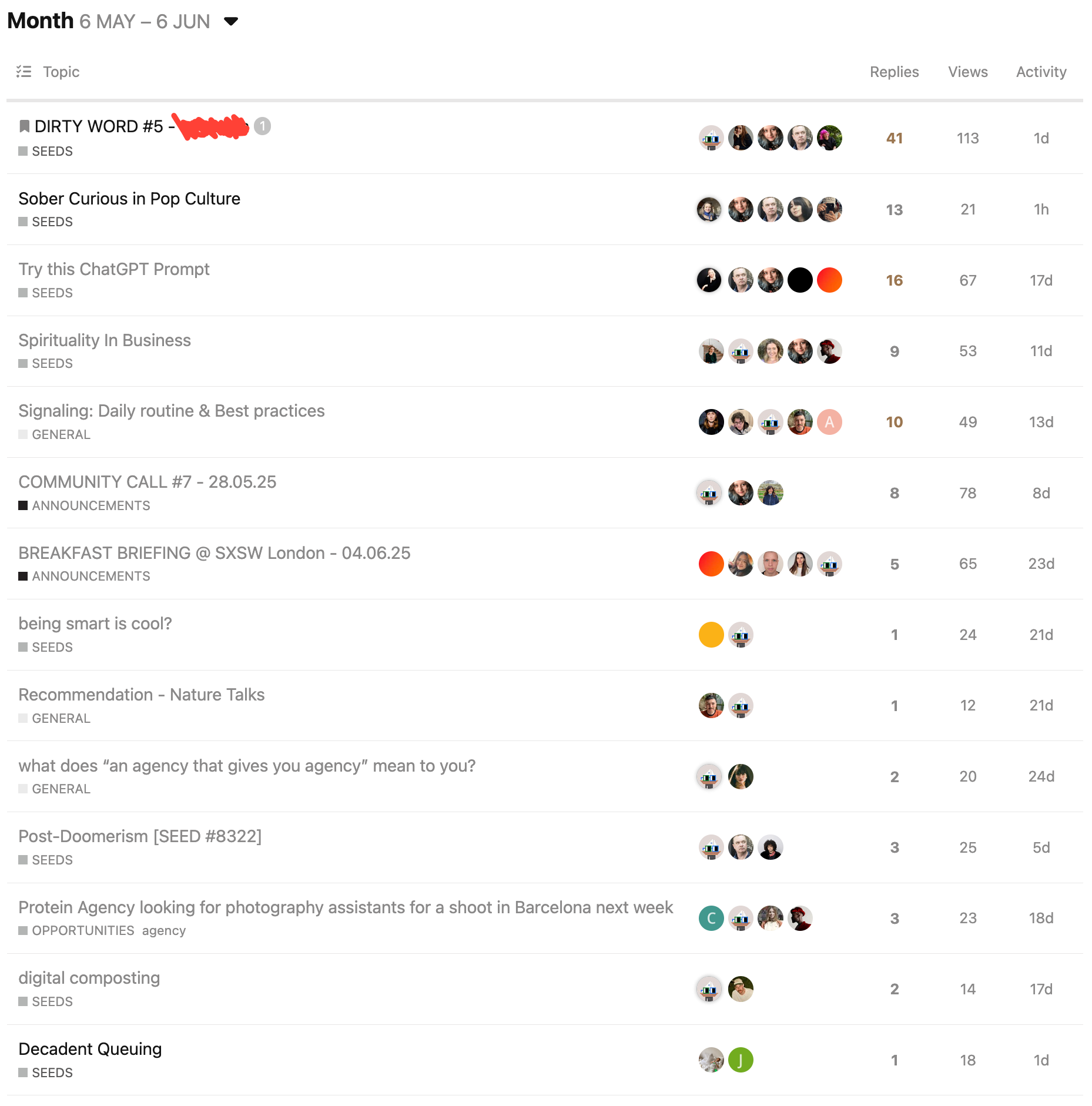#718 | Holly Herndon, Post-Doomerism & Dirty Words

If you find yourself in Shoreditch this weekend, make sure you swing-by Protein STUDIOS to see work by Andy Warhol, Beeple, Hans Ulrich Obrist and the Glitch Artist Collective. It also features Holly Herndon and Mat Dryhurt's The Call from their incredible Serpentine Gallery show. The event is part of SXSW London, but open to the public (so no need for pass).
We've also started preparing our next DIRTY WORD. The topic is something we've been tracking for the last few years and recognise there's already been plenty written about it, but nothing we've seen gets to the root cause of why we're still talking about it. As with our previous DIRTY WORDS, we'd love to hear what it means to you and where/how you're seeing it show up in culture, so please click below to share your thoughts and also find out what the word is ;-)
What happens when you ask an AI to interpret a series of images not for facts, but for feeling? It’s seductive: what the AI returns feels coherent, insightful, even poetic. At the same time, it also feels pretty jarring.
One of my earliest childhood memories is drinking my mum’s Milk and Kool-Aid mix when strawberry milk was out of our budget. It tasted rancid. But beyond that lactic betrayal, something else lingered in the taste: improvisation as survival.
Because dooming just doesn’t hit like it used to – and a harder drug is already in beta. If we zoom out beyond my demonstrably insignificant algorithmic bubble, we can still point towards the energy of Chappell Roan, Doechii and Zohran Mamdani; or Luigi Mangione’s grassroots legal fund surpassing one million dollars. We didn’t just get a new pope – we got a new Balenciaga creative director.
Since 2019, whispers of its demise grew louder, especially through the pandemic, yet while empty dance floors sparked eulogies, communities quietly rewired how they connect through music and redefined what it means to move together. This new matrix of musical connection is reshaping how we gather, listen and move together.
Wellness has evolved from grassroots practice to a $5.6 trillion global industry — driven in part by what we’re calling competitive wellness, where rest becomes performance, health is branding and the goal is to optimise, gamify and win. Watch the recording or read the highlights from our recent FORUM on the rise of competitive wellness – and what it means for brands.
What does it mean to have a prestigious job in today’s world? This question has been on my mind for a while now. For context: I’m Brazilian, writing from São Paulo. Nationally, a few social and cultural phenomena have caught my attention – child coaching influencers, teenagers mocking formal employment, and the rise of far-right politics that often promote the dream of “owning your own business” as the ultimate career goal.
On Tuesday night, a bunch of SEED CLUB members met at Protein Studios to discuss and exchange cult thrillers, dark comedies, folklore-inspired fiction, explorations of rejection and masculinity – anything, really, that left a lasting impression.
Met Gala memes once defined the internet’s fashion discourse – now, they reflect its fatigue.
Here's a screenshot of what's been germinating in our digital garden in this month, so if you'd like to plant some SEEDS of your own and get paid to have them featured on Protein XYZ as well as collaborate with Protein AGENCY on client projects, apply here:

In honour of Holly showcasing The Call at ours this week, we thought we'd revisit the interview we did with her in 2015 for the cover of Protein JOURNAL #16.

It’s hard not to be cynical about today’s music industry heavyweights. Some of the largest, most successful labels and producers seem to use the same money centric formulas to maximise the chances of success and minimise financial risks. Countless focus groups and creative meetings ensure that the music reaching the public’s ears will ruffle just enough feathers to get noticed while still appealing to mainstream tastes. This might sound like the grumblings of an older generation, but it seems as though the reason so much pop music sounds the same is because of this formula for commercial success. The more artistically adventurous among us should be grateful then, that artists such as Holly Herndon are pushing back the boundaries of what contemporary music can be, what issues it can address and even how it can be made.
Herndon’s music is difficult to describe and even harder to label. It is largely electronic but defies the dance music trappings of other music in this genre. Made up of countless elements – some instrumental, some musical and some simply recordings she’s made – it’s a complex web of tiny parts which come from very different places. Explaining how her audio inspirations can come from pretty much anywhere, she says:
“I was working on New Ways to Love, when Mat, my partner, slammed the fridge door. Something jiggled in the perfect way, so I ran in and recorded it.”
Last year, this unconventional approach to making music saw her invited to speak at Red Bull’s Music Academy in Tokyo. She lectured on the role of music in today’s society, new ways to make music and how technology is evolving our understanding of instrumentals. Her talk lasted nearly two hours and it’s clear she is passionate about the role of music and its power as a creative force.
“So much of contemporary culture is about cynicism and sarcasm. I would much rather we were optimistic and having conversations about what we want things to be like"
Simply labelling Herndon a musician feels inadequate. Music and audio are, without doubt, her primary modes of expression but there’s so much going on beneath the surface of her work that it might be more fitting to think of her as an artist who works with sound. She is, however, not overly enthusiastic about that badge:
“I guess ‘artist’ makes sense, but I get a little bit cringey with that title. I definitely work in other spheres.”
You can read the full interview here and buy the Protein JOURNAL here.


